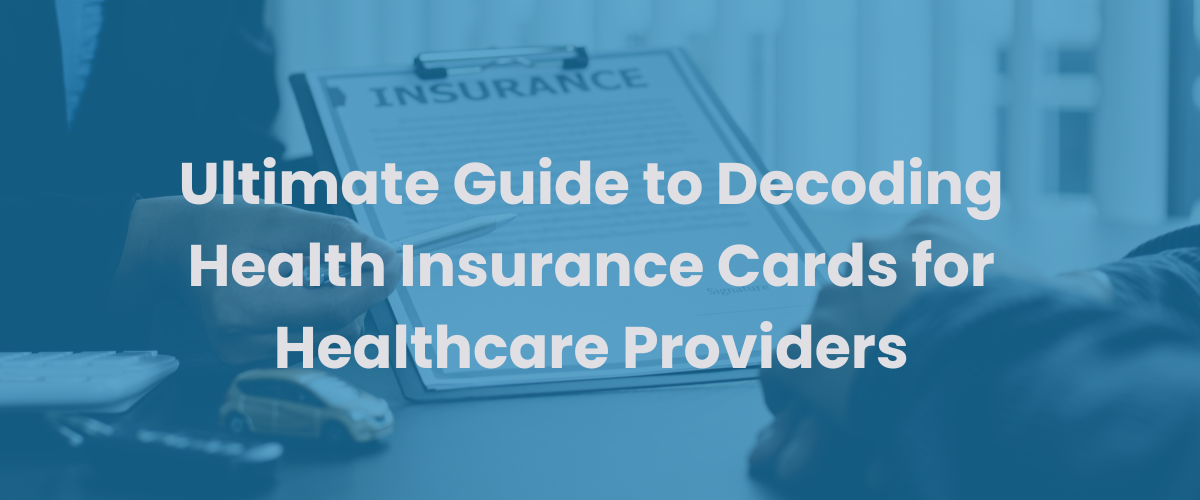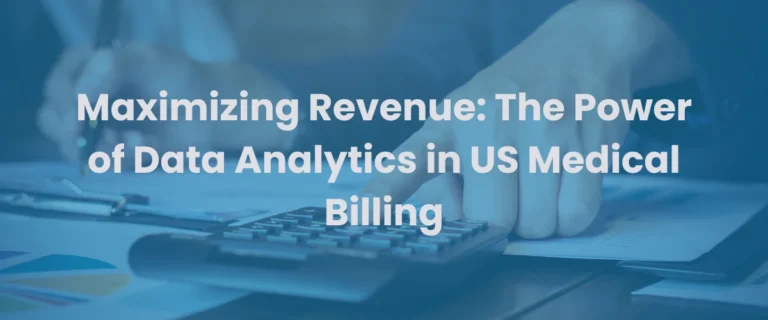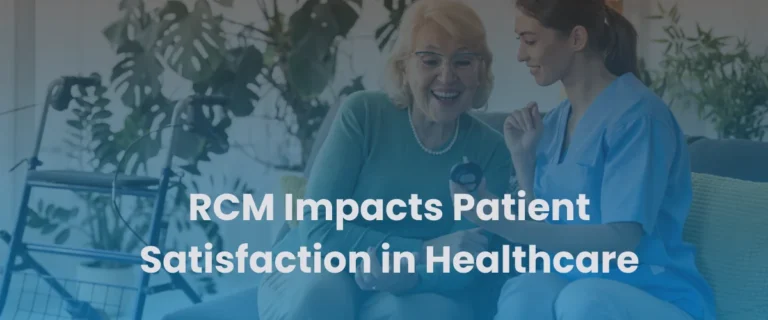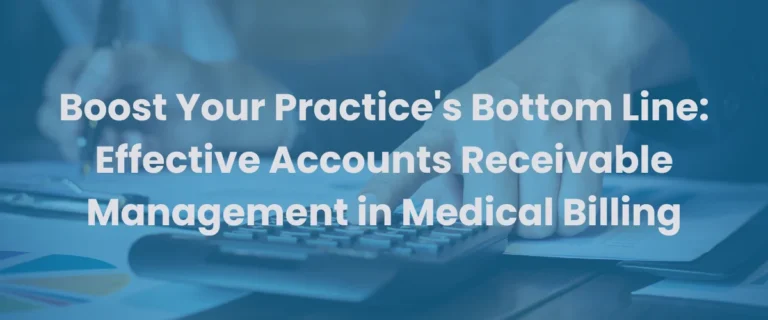Why Understanding Health Insurance Cards is Crucial for Your Practice?
Health insurance cards are small but packed with critical information that impacts billing accuracy, claim approvals, and patient care. Misinterpreting key details—like policy numbers, group IDs, or Rx BIN numbers—can lead to costly denials, delays, and revenue loss.
This guide will help you:
✔ Decode Medicare, Medicaid, and private insurance cards (Aetna, Cigna, UnitedHealthcare, BCBS).
✔ Locate essential details (Member ID, Group Number, Payer ID, Rx BIN).
✔ Avoid common billing mistakes that lead to claim rejections.
✔ Optimize insurance verification for faster reimbursements.
Let’s dive in!
How to Read a Health Insurance Card: Front vs. Back
Front of the Card: Key Patient & Plan Details
- Policyholder Name – Identifies the primary insured (check if the patient is a dependent).
- Member ID (Policy Number) – A unique alphanumeric code (must be 100% accurate to avoid claim denials).
- Group Number – Links to employer-sponsored plans (not always present).
- Plan Type (HMO, PPO, EPO, POS) – Determines network rules, referrals, and out-of-pocket costs.
- Copayment Details – Lists fixed fees for office visits, ER, etc.
Back of the Card: Billing & Support Information
- Claims Address – Where to send paper claims (though electronic submissions are preferred).
- Payer ID – A 5-digit code for electronic claims (e.g., Aetna: 87654, Cigna: 62308).
- Customer Service Numbers – Separate lines for providers vs. members.
- Pharmacy Benefits (RxBIN, RxPCN, RxGroup) – Essential for prescription processing.
Decoding Medicare Insurance Cards
Medicare cards differ from private insurance. Key elements:
✔ Medicare Beneficiary Identifier (MBI) – Replaces SSN for security (e.g., 1EG4-TE5-MK72).
✔ Part A (Hospital) & Part B (Medical) Coverage – Check if both are active.
✔ Medicare Advantage (Part C) or Part D (Drugs) – Patients may have separate cards.
Pro Tip: Always ask for both Medicare and supplemental insurance cards (Medigap, Part D) to avoid billing errors.
Private Insurance Cards (Aetna, Cigna, UnitedHealthcare, BCBS)
While layouts vary, look for:
- Member ID – Primary identifier for claims.
- Group Number – For employer-based plans.
- Plan Type (HMO/PPO) – Affects referrals and out-of-network costs.
- Payer ID – Critical for electronic claims (e.g., UHC: 87726).
- Rx BIN Number – A 6-digit pharmacy identifier (often on the back).
5 Critical Mistakes to Avoid
- Incorrect Member ID Entry – A single wrong digit = denied claim.
- Missing Group Number – Required for employer-based plans.
- Wrong Payer ID – Sends claims to the wrong insurer.
- Ignoring Plan Type – HMO patients need referrals, or claims will be denied.
- Overlooking Secondary Insurance – Always check for Medigap, Medicaid, or spouse’s plan.
How ATMEDBILLING Simplifies Insurance Verification & Billing
Struggling with claim denials, slow reimbursements, or confusing insurance cards? Our medical billing experts ensure:
- Accurate Eligibility Checks – Verify coverage in real time.
- Clean Claim Submissions – Correct Payer IDs, Member IDs, and Group Numbers.
- Reduced Denials – Proactive error prevention.
- Faster Payments – Streamlined billing processes.
Let us handle the paperwork you focus on patient care!
FAQs: Health Insurance Cards Explained
1. What if a patient loses their Medicare card?
They can request a replacement at Medicare.gov or call 1-800-MEDICARE.
2. Where is the Rx BIN number on an insurance card?
Usually on the back under “Pharmacy Benefits” (a 6-digit code).
3. Do all insurance cards have a group number?
No only employer-sponsored plans have them. Medicare and individual plans don’t.
4. What’s the difference between Policy ID and Plan Number?
Policy ID = Unique patient identifier.
Plan Number = Specific benefits package (e.g., employer plan type).
Final Thoughts
Mastering health insurance cards saves time, reduces denials, and maximizes revenue. Bookmark this guide for quick reference, and consider partnering with ATMEDBILLING for seamless billing solutions.
Need help with insurance verification or claims? Contact us today!




